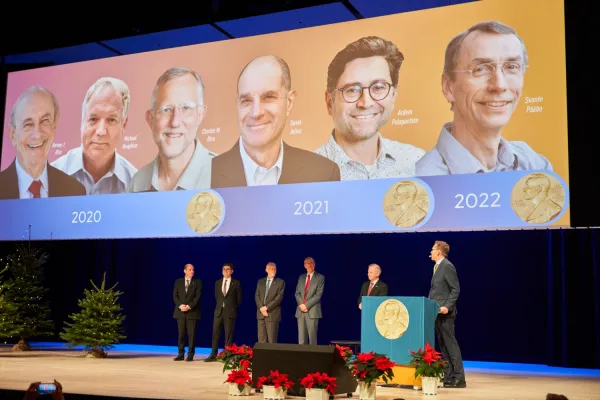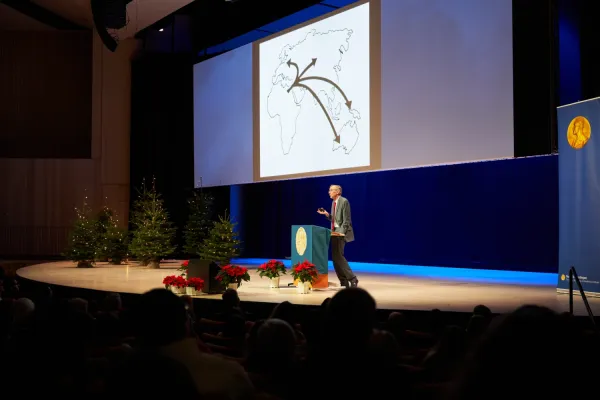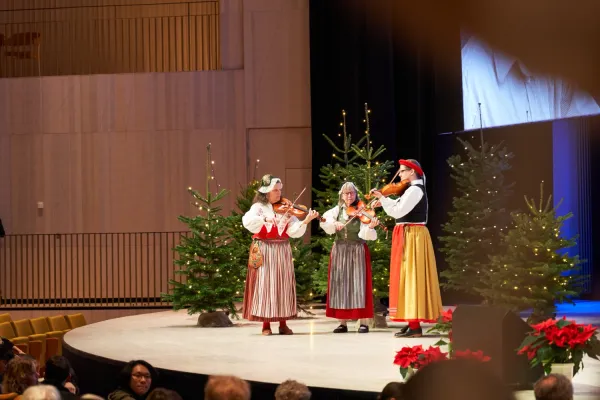Svante Pääbo highlighted the Neanderthal in us
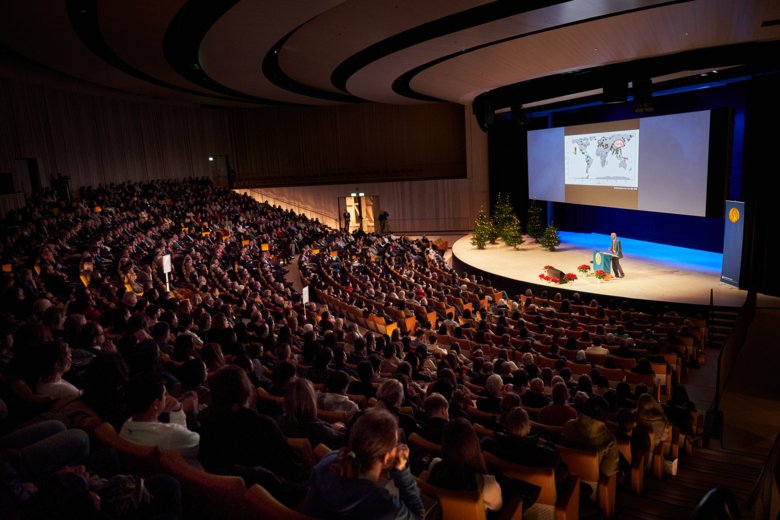
When Svante Pääbo talked about the importance of Neanderthals, the audience in Aula Medica listened carefully. The Nobel Laureate in Physiology or Medicine explained, among other things, that we carry their genes and that they may have been more sensitive than we think.
A few hours before Svante Pääbo’s Nobel lecture was to begin, a long queue of people had already formed in the biting cold outside Aula Medica at Karolinska Institutet’s campus in Solna.
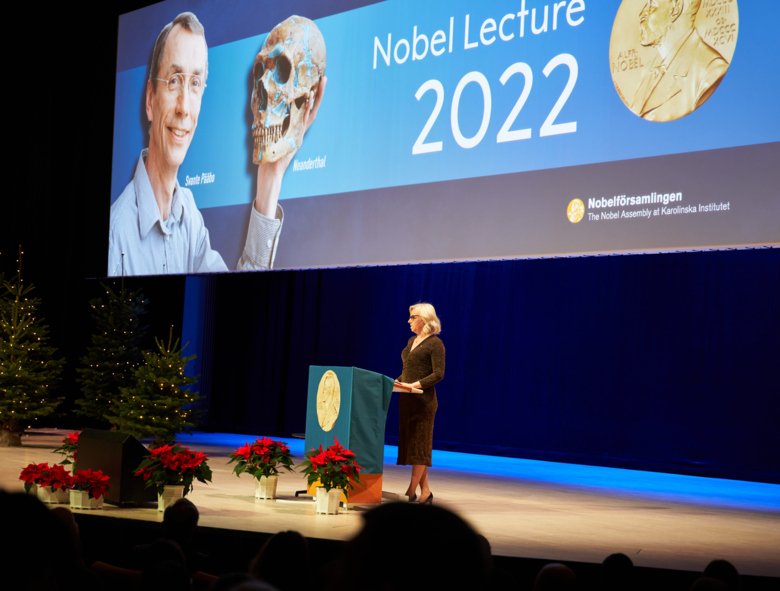
“It is with great excitement that we look forward to listening to Dr. Pääbo´s account of his work in an area of research that I think is of unusually broad interest, namely human evolution,” began Gunilla Karlsson Hedestam, professor of vaccine immunology and a member of the Nobel Assembly at Karolinska Institutet, once everyone was seated in the warmth of the auditorium.
She highlighted how Svante Pääbo’s diversity of interests and studies, for example in Russian and Egyptology, created the conditions for his later discoveries. These include the mapping of Neanderthal DNA and the discovery of a new human species – the Denisovans.
“This information has given us a completely new reference point for understanding our evolution,” she summarised.
The interesting thing about Neanderthals
Svante Pääbo was grateful for the cordial introduction and the Nobel Prize. He then backtracked a few million years.
The first human beings appeared in Africa and spread to Asia and Europe around two million years ago. But modern humans – meaning those whose skeletons were similar to ours and who are the ancestors of today’s humans – appeared in Africa much later. They began to wander out into the rest of the world less than a hundred thousand years ago, and they were not alone. They encountered the Neanderthals in western Eurasia. In eastern Eurasia, they encountered other forms of hominins that are now extinct and about which we know less.
Shortly after modern man appeared on the scene, the Neanderthals also disappeared. It’s quite recent, Svante Pääbo noted; about 1,400 generations ago, they were still here.
“Our research team is obsessed with Neanderthals since twenty years,” he said, explaining why.
"They are indeed our closest evolutionary relatives. If you like, they define present-day humans as a group. I am very interested in what way we are genetically and biologically unique, and we should compare ourselves with them,” said Svante Pääbo.
Early attempts and method development
Svante Pääbo made the first attempts to decipher ancient DNA in the 1980s during his doctoral studies at Uppsala University, when he, without his supervisor’s knowledge, analysed the DNA of mummies.
He told how he obtained human DNA and published his results. But it soon turned out that it wasn’t as easy as he’d thought, he said, showing a crossed-out picture of the DNA sequences in the scientific paper.
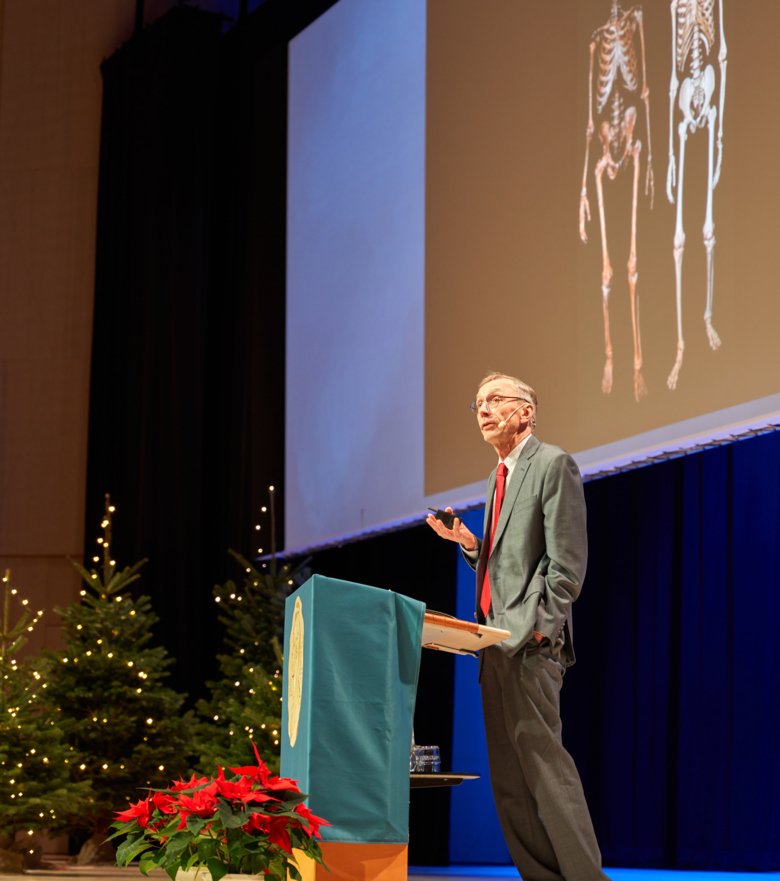
“These first sequences were clearly not from a mummy. They were probably from a museum curator, or from me or someone else.”
Ancient DNA is only found in small amounts and is both fragmented and chemically altered, making it very sensitive to contamination. Over the next few years, Svante Pääbo and his colleagues worked to overcome the difficulties.
“Much of the work was done not in human remains but in extinct animal species, because you could then easily distinguish contaminating human DNA from DNA of, say, a giant ground sloth or a mammoth,” said Svante Pääbo.
After long negotiations in the early 1990s, Svante Pääbo gained access to samples from the primordial type of all Neanderthals, the one found in 1856 in Neanderthal, Germany. With a tremendous effort, the research team succeeded in sequencing the mitochondrial DNA and was then able to compare it with modern human DNA.
Kinship with the Neanderthals
A question at the time was whether modern humans and Neanderthals had children with each other at some stage. The gene sequence from the mitochondria did not suggest that any mixing occurred, but the researchers knew that they would have to analyse the DNA of the cell nucleus to settle the matter.
“It was clear that the full story of the genetic history of any group cannot be described just from the mitochondrial DNA,” said Svante Pääbo.
The goal came within reach, among other things, thanks to new DNA sequencing techniques that were developed in the early 2000s. By 2010, he had managed to map around 50 per cent of a Neanderthal’s entire DNA. When compared with the DNA of modern people, it turned out that it matched the DNA of Europeans and Asians to a greater extent than that of Africans.
“Wherever you look, outside sub-Saharan Africa, there are additional similarities with the DNA of Neanderthals,” said Svante Pääbo.
It now became clear that modern man encountered and interacted with the Neanderthals soon after they left Africa, perhaps in the Middle East, and added their genetic contribution to the rest of the world, Svante Pääbo explained.
The discovery of the Denisovans
In search of even better Neanderthal DNA, Svante Pääbo analysed a bone fragment from the Denisova Cave in Siberia, which archaeologists believed had human origins.
“We were very surprised to find that the genome was not from a neanderthal, nor from a modern human. It was something else,” said Svante Pääbo.
This previously unknown human species was named Denisovans. This group has also contributed to the DNA of now-living humans, especially in Oceania where 5-6 per cent of human DNA comes from them.
“We believe that the archaic humans came out of Africa and evolved into Neanderthals in western Eurasia and into Denisovans in eastern Eurasia,” Svante Pääbo summarised.
The legacy of extinct relatives
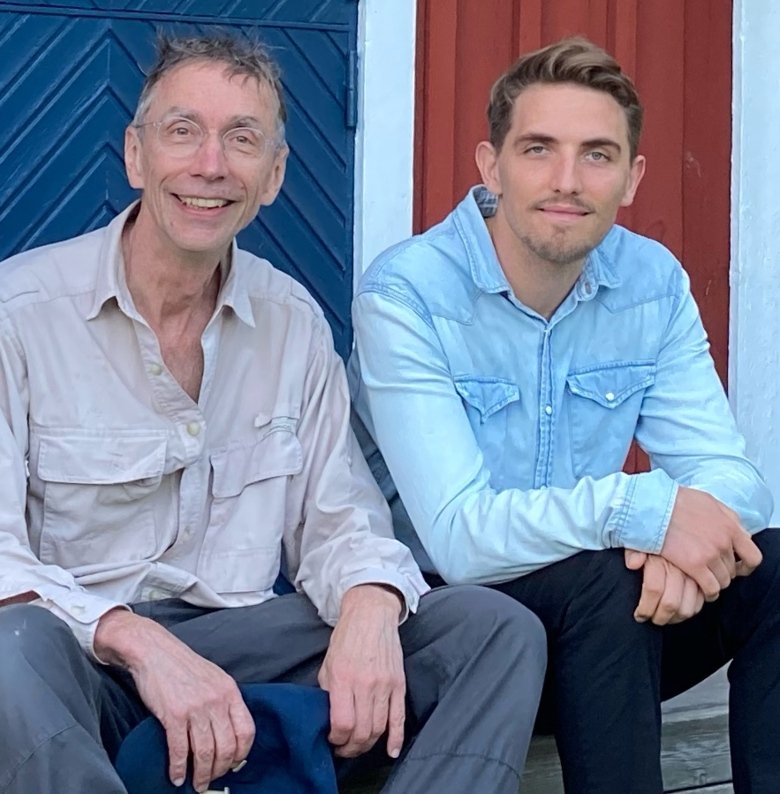
Today, Svante Pääbo conducts research in collaboration with Hugo Zeberg, a researcher at Karolinska Institutet. Together, they have found examples of how the genetic inheritance of our extinct relatives affects our health today.
One of the discoveries showed that some modern humans carry a Neanderthal gene variant that makes them more sensitive to pain.
“It’s as if they were eight years older when it comes to how much pain they experience in their lives,” said Svante Pääbo.
Whether Neanderthals experienced more pain is not certain, but it is not impossible given that they had two copies of the gene variant, unlike modern humans who have one at most.
“Maybe we need to rethink our view of the Neanderthals as brutal and insensitive individuals,” Pääbo said.
Another discovery concerns a Neanderthal variant of the progesterone receptor that is also found in some modern humans. The variant is linked to premature birth, but at the same time protects against miscarriage. Overall, it increases the chances of giving birth to alive babies.
A third discovery was made after Hugo Zeberg, together with other researchers, identified genetic risk factors for becoming seriously ill with covid-19.
“It shocked us to see that one of the risk factors was very closely related to the Neanderthal genome,” said Svante Pääbo.
Among people hospitalised with COVID-19 in 2020, carriers of the Neanderthal variant had twice the risk of dying. Overall, the gene variant, which is much more common in Southeast Asia than in Europe, has been associated with at least one million deaths. At the same time, it has been shown to reduce the risk of contracting HIV.
“This shows that genetic variants have several different effects. They’re like double-edged swords,” said Svante Pääbo.
The pursuit of what is uniquely human
Finally, he talked about the pursuit of the genetic changes that are unique to humans.
Neanderthals and Denisovans existed for hundreds of thousands of years, but they were probably never more than 200,000 individuals. Modern man, on the other hand, developed various technologies and art, grew rapidly in numbers and spread to all corners of the world.
“Some of the readiness to absorb and develop culture and technology may hide in these genetic changes,” said Svante Pääbo, showing a list of uniquely human gene changes whose functions researchers can now study.

